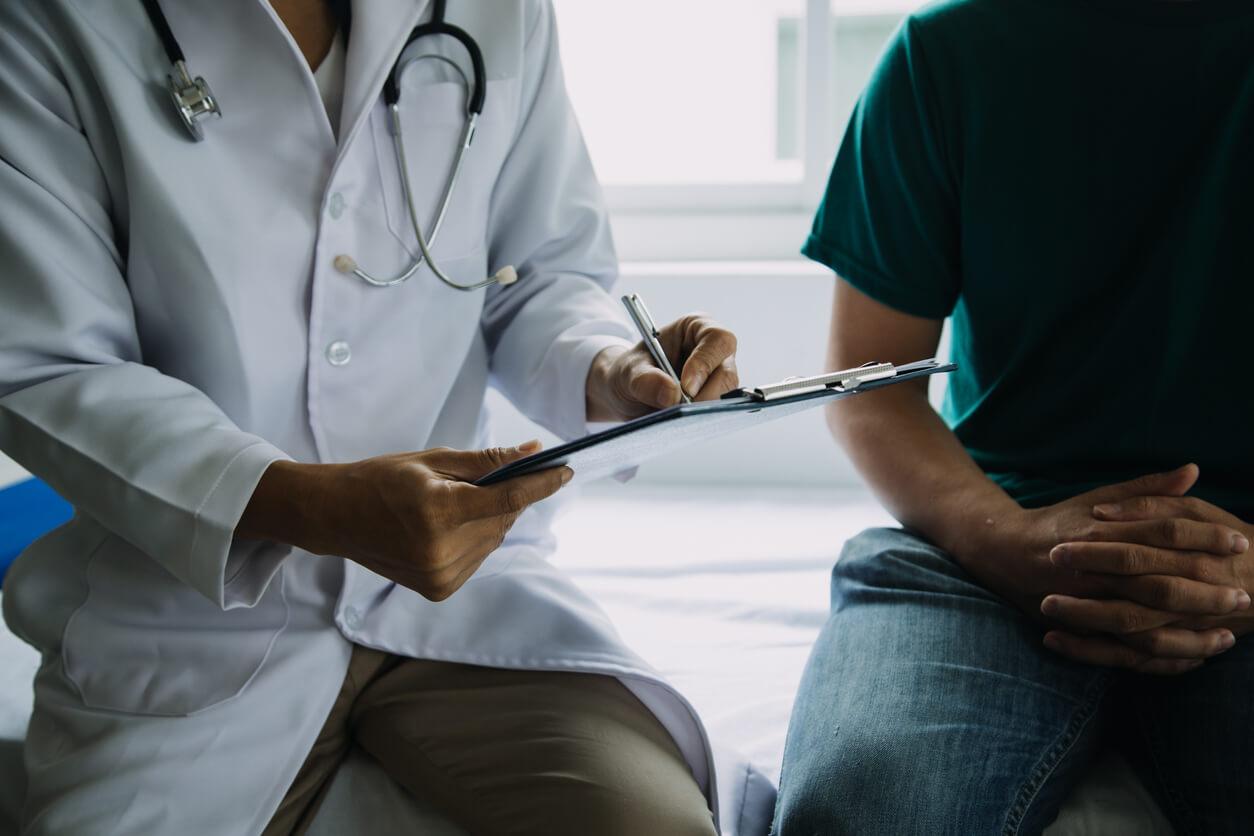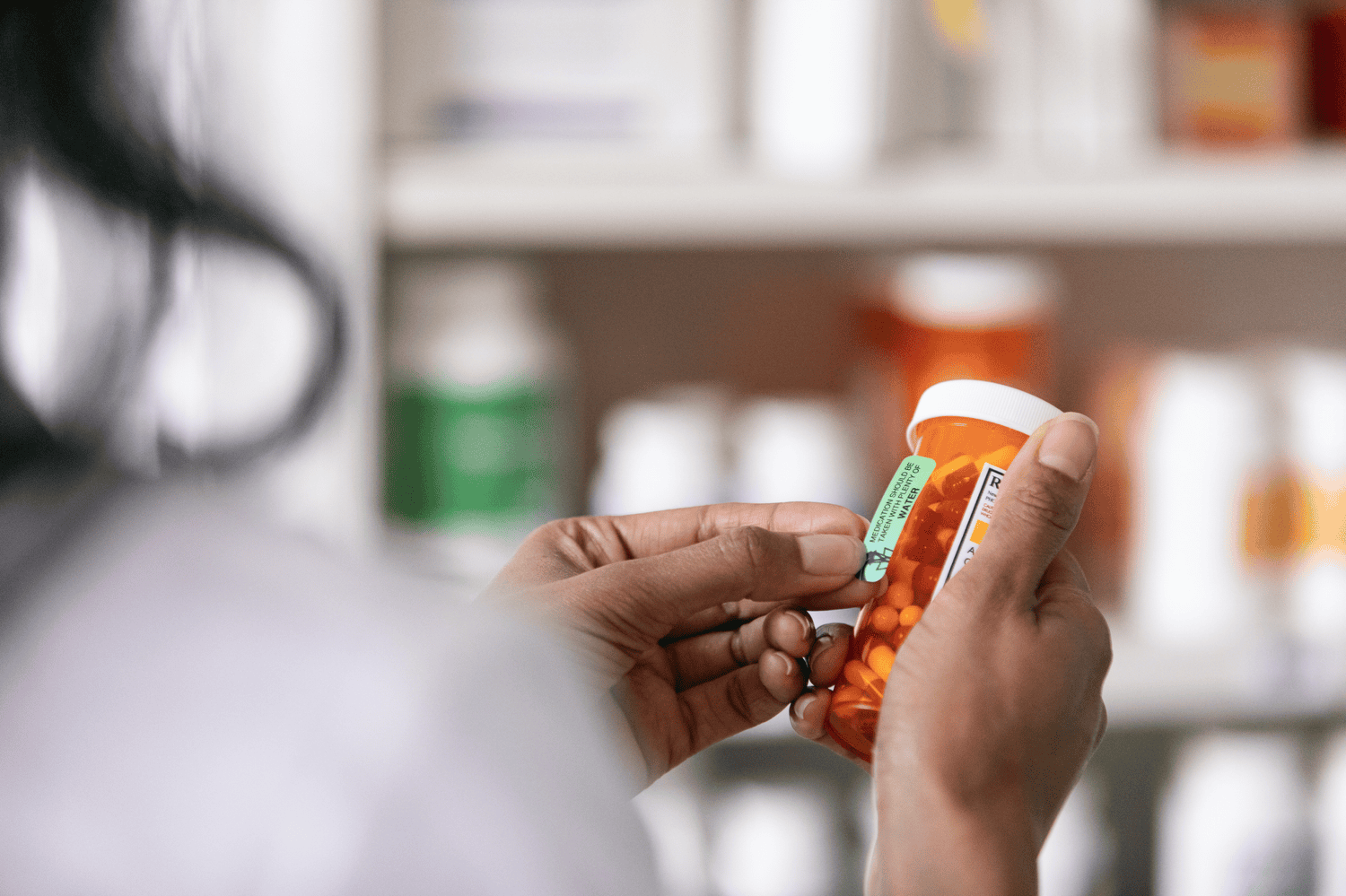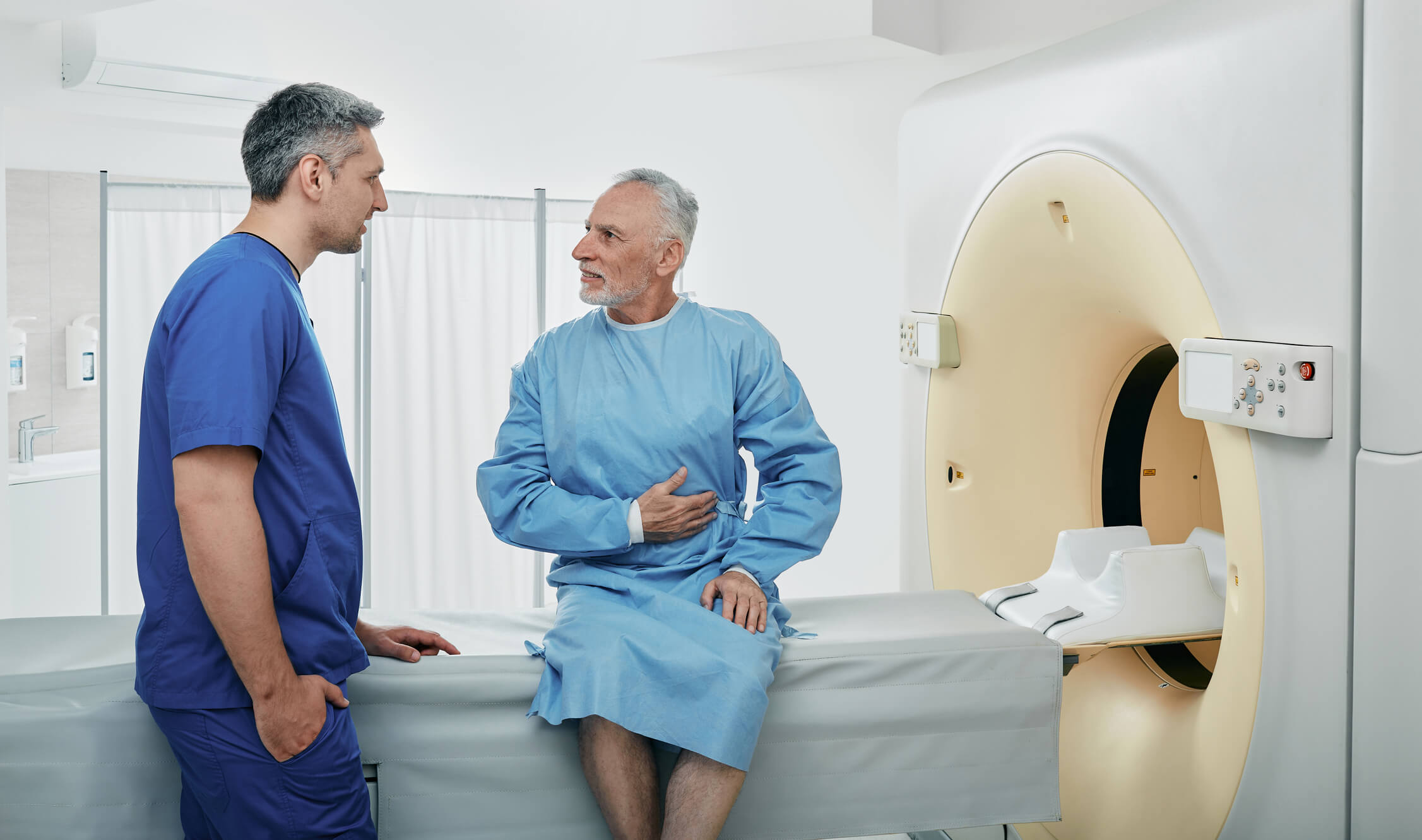Breast Cancer Screenings: Facts and Guidelines
Everything you need to know about breast cancer screenings in honor of Breast Cancer Awareness Month
Breast cancer is responsible for one in every three new female cancer diagnoses every year. One in eight women will develop some form of breast cancer throughout their lives, with over 4 million women currently being treated or having finished treatment for breast cancer. BreastCancer.org, a non-profit organization dedicated to providing resources and treatment options for women with breast cancer, estimates that 297,790 new breast cancer cases will be diagnosed in 2023.
While these numbers appear grim, breast cancer incidence has decreased since 2000. This is partly due to effective new treatments and increased awareness around this disease. October is Breast Cancer Awareness Month; a whole month explicitly dedicated to this cause. To honor this fight against breast cancer, we have put together a guide to breast cancer screenings. This article will detail screening recommendations for women, different screening tests, and how to screen yourself.
What is a breast cancer screening?
Breast cancer screening tests are used to detect and diagnose breast cancer. Breast cancer may not cause noticeable symptoms as the disease develops.
Screenings are a vital tool in the early detection of breast cancer. Early-stage breast cancer is more responsive to treatment, meaning that the earlier health care providers find evidence of cancer, the easier it is to treat.
If your doctor suggests a breast cancer screening, it does not mean you have breast cancer. Rather, these standard tests are performed on all women starting at a certain age. Women with a higher risk of breast cancer may undergo more frequent or advanced forms of testing, but nearly all women will undergo routine breast cancer screenings once they turn 40.
Breast cancer screening recommendations
The American Cancer Society (ACS) and the US Preventative Services Task Force (USPSTF)---the organizing body that provides general screening recommendations to doctors—provide divergent screening recommendations for women with an average risk of breast cancer and women at high risk.
These recommendations are detailed below.
Breast cancer screening recommendations for women at average risk
According to the ACS, a woman is at average risk for breast cancer if she has no personal history of breast cancer, no close family history of breast cancer, no genetic mutation (like those in the BRCA1 or BRCA2 gene) that increases the risk of breast cancer and/or has not received radiation therapy to the chest before age 30.
Women between the ages of 40-44 can choose to undergo screening mammograms annually.
Women between the ages of 45-54 should undergo mammography annually.
Women 55 and older can choose to get a screening mammogram every year or every other year as long as they are in good health and expected to live another ten years.
Breast cancer screening recommendations for women at high risk
The ACS recommends that women at high risk for breast cancer get an annual screening mammogram and breast MRI between the ages of 25-40. The screening types and frequency may vary depending on the genetic mutation and the youngest age of breast cancer diagnoses in the family. The National Comprehensive Cancer Network (NCCN) also recommends women at high risk receive a clinical breast exam (CBE) every 6-12 months, starting at age 25.
The decision to start testing is collaborative between you (the patient) and your health care provider). Talk to your provider about your personal and family history of breast cancer and your preferences about testing.
Risk factors for breast cancer
Certain risk factors put women at greater risk for developing breast cancer. It's important to note that having one or more of these risk factors does not guarantee that a woman will develop breast cancer, but it may elevate her risk. Risk factors include:
- Gender: Being female is the most significant risk factor for breast cancer. While men can develop breast cancer, it is much more common in women.
- Age: The risk of breast cancer increases with age, with most cases occurring in women over the age of 50.
- Family History: A family history of breast cancer, especially in close relatives (such as mother, sister, or daughter), can increase the risk, particularly if the relative was diagnosed at a young age.
- Genetic Mutations: Inherited genetic mutations, such as BRCA1 and BRCA2 gene mutations, can significantly increase the risk of breast cancer.
- Personal History: Women who have previously had breast cancer are at an increased risk of developing it again, either in the same or opposite breast.
- Radiation Exposure: High-dose radiation therapy to the chest area, especially during a young age, increases the risk of breast cancer.
- Dense Breast Tissue: Women with denser breast tissue may have a higher risk.
- Alcohol Consumption: Regular and excessive alcohol consumption can increase the risk of breast cancer.
- Race and Ethnicity: Certain racial and ethnic groups have a higher incidence of breast cancer, with white women having the highest rates in the United States.
- Hormonal Factors: Use of oral contraceptives or hormone replacement therapy may slightly increase the risk.
It's important to remember that having these risk factors does not mean a woman will develop breast cancer. Many women with one or more risk factors never develop the disease, while some with no apparent risk factors develop breast cancer. Regular breast cancer screening, self-exams, and consultation with healthcare professionals are crucial for early detection and managing breast cancer risk.
Types of breast cancer screening tests
Health care providers will use different screening tests depending on the patient’s needs. These various methodologies are detailed below.
Mammography
Mammography is the most common form of cancer detection test. During these routine screenings, the breast is gently compressed between two plates, and low-dose X-rays are used to create detailed images of the breast tissue. These images, called mammograms or mammographic films, allow healthcare professionals to identify any abnormal growths, such as tumors or cysts, that may indicate breast cancer.
Conventional and digital mammography are breast imaging techniques used for early breast cancer detection, but they differ in technology and image processing. Conventional mammography, analog mammography, uses X-ray film to capture breast images.
In contrast, digital mammography converts X-ray information into digital images that can be stored, manipulated, and transmitted electronically. Digital mammography offers several advantages, such as enhanced image quality, the ability to adjust contrast and magnification for better visualization, and the potential for more accessible storage and retrieval of images. It also allows for computer-aided detection (CAD) systems to assist radiology professionals in identifying abnormalities. Additionally, digital mammograms can be shared electronically with healthcare providers for quicker consultations and follow-up.
Overall, digital mammography offers improved efficiency and diagnostic capabilities compared to conventional mammography.
Breast ultrasound
A breast ultrasound is a medical imaging procedure that uses high-frequency sound waves to create real-time images of the breast tissue. It is a non-invasive and painless technique often used to complement mammography and provide additional information about breast health.
During a breast ultrasound, a transducer is moved over the breast area, emitting sound waves that bounce off breast tissue and produce images on a computer screen. This imaging method helps evaluate breast lumps, distinguishing between solid masses and fluid-filled cysts and assessing blood flow within the breast. Breast ultrasounds are valuable for further investigation when a mammogram detects an abnormality or when a woman has dense breast tissue. They are safe, radiation-free, and can help health care providers make informed decisions about breast health and potential follow-up procedures.
MRI
A breast MRI, short for Magnetic Resonance Imaging, is a sophisticated medical imaging technique used to obtain detailed, three-dimensional images of the breast tissue. Unlike mammograms, which use X-rays, breast MRIs employ magnets and radio waves to create highly detailed images. This imaging method is handy in cases where mammograms or ultrasounds may not provide sufficient information, such as for women with dense breast tissue or those at high risk for breast cancer.
Breast MRIs are valuable for assessing breast health, detecting tumors, and evaluating the extent of breast cancer, providing valuable insights for diagnosis and treatment planning. However, they are typically used in conjunction with other screening methods and are not a replacement for mammograms.
Clinical breast exam and breast self-exam
Clinical breast exams are physical examinations of the breast performed by health care providers during routine medical check-ups. These exams involve the healthcare provider using their hands to feel for any lumps, changes in breast texture, or other abnormalities in the breast tissue. While these clinical exams used to be a standard part of breast cancer screening, there is little evidence that these tests are effective at detecting breast cancer, especially when a patient can undergo screening mammograms.
On the other hand, breast self-exams are examinations that individuals can perform on their breasts. They typically involve systematically feeling and inspecting one's tissue for breast changes or abnormalities. Breast self-exams are intended for monthly self-assessment and are best done a few days after a menstrual period when the breasts are less likely to be tender or swollen. Self-exams, like clinical exams, are less effective at detecting the symptoms of breast cancer than mammography. Most importantly, women should be familiar with how their breasts normally look and feel, reporting abnormalities or changes in breast tissue to a health care provider.
Both clinical and self-breast exams come with the risk of false-positive results (finding a problem when there isn’t one). Because of this, mammography and other diagnostic imaging techniques are used to definitively detect symptoms of breast cancer.
Genetic testing
Genetic testing for breast cancer involves analyzing a person's DNA to identify specific genetic mutations or alterations that may increase their risk of developing breast cancer. The most well-known genetic mutations associated with breast cancer are BRCA1 and BRCA2. These tests are typically conducted through a blood sample or a saliva swab and can help individuals and their health care providers understand their genetic predisposition to breast cancer. Positive test results may indicate an increased risk, prompting individuals to consider risk-reduction strategies like more frequent testing, prophylactic surgery, or other preventive measures.
Genetic testing for breast cancer is particularly important for individuals with a family history of the disease or certain ethnic backgrounds known to have higher prevalence rates of specific mutations, as it can inform personalized healthcare decisions and potentially lead to early intervention and improved outcomes.
Risks of screening tests
While screening tests play a crucial role in the early detection of breast cancer, it should be noted that, in some cases, there are some harms associated with these exams.
It is possible to receive a false positive diagnosis from one of these screening tests. This occurs when a health care provider flags an abnormality in breast tissue that looks like cancer but is harmless. This can lead to follow-up testing, which can be expensive and anxiety-inducing.
In addition, there is the risk of overdiagnosis, which occurs when doctors find cancer that would not cause problems or problems within the patient’s lifetime. Overdiagnosis can lead to overtreatment through breast cancer treatment procedures like surgery and radiation therapy when they are not needed.
Mammograms also expose the patient to low doses of radiation. While low-dose radiation is generally harmless, repeated exposure to X-rays can lead to potentially harmful side effects.
The risks associated with screening tests highlight why the decision to get screened and how often is a collaborative conversation between provider and patient. Breast cancer screening ensures that harmful cancers are caught early for prompt treatment. Keep your health care provider informed about your medical history and follow their testing recommendations.
Sesame is committed to raising awareness around breast cancer and cancer screenings. If you want more information or want to discuss breast cancer testing with a licensed health care provider, book an online women’s health appointment on Sesame. These convenient and affordable appointments offer the opportunity to talk through any questions or concerns with confidentiality and comfort.
Related posts

To help better understand breast cancer—how prevalent it is, how it’s diagnosed and treated, and how to prevent it—we put together this guide.

Colorectal cancer screening tests are tests used to detect early signs of colon cancer. Learn more about types of screenings and screening recommendations.

Prostate exams are screening tests used to check for the signs of prostate cancer. Here's what to expect during a prostate exam and when to start screening.

Colon cancer is the second-leading cause of cancer death in the United States, which is why it’s critical to talk about the importance of early detection and colorectal cancer screening.

A US Appeals Court has placed a temporary hold on a ruling by a federal judge in March that struck down preventive care coverage for medications, cancer and diabetes screenings, pregnancy and more. What does this mean for you?

Colorectal cancer, in particular, tends to develop from abnormal growths (known as polyps) in the colon. These polyps are non-cancerous but may turn cancerous if they are left untreated.

Health issues that disproportionately affect women include breast cancer, Alzheimer’s disease and osteoporosis. Being aware of the causes, signs and symptoms of these conditions is the first step toward combating them.

Cost factors for a computed tomography (CT) scan

Take control of your health and health care. Use these top questions to learn about health issues, risk factors, and ways to improve your overall health.
